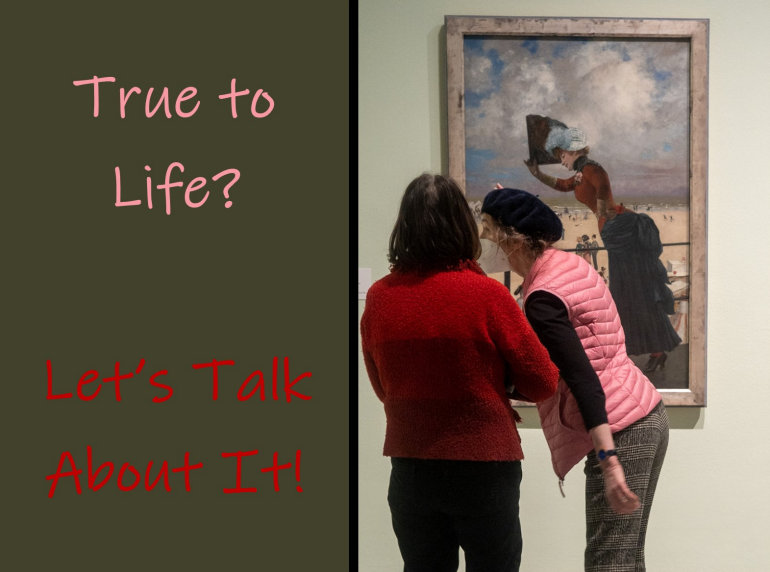ART: The first hour of each class will consist of a number of comparisons like the one below, which I offer as an advance sample. This image, and all other similar ones with a star in the bottom corner, can be clicked on to show each of the pictures at larger size. The questions underneath it are samples of the ones I may ask in class. Think about them now, to get the ball rolling. rb.



Some questions: What do you think inspired the photographer, Richard Tuschman, to pay homage to this painting? What has he altered? Does his version add anything to make the exercise worthwhile? Conversely, does the photograph change your appreciation of the painting? Would the photograph alone work for somebody who had never seen a Hopper painting? Can you suggest a title for either image?
FILM: The second hour of each class will focus on some other art. This week, we shall extend the
photography theme by looking at film, comparing clips from 1936 through 2021, all made in Britain and ranging from gritty
documentaries to the sinister world of Shakespeare's witches. There is no need for advance preparation. However, one of the
clips (the 1936 documentary Night Mail) includes the poem of the same name by WH Auden; as it was impractical to
add subtitles, I am giving you the text in advance.
PEOPLE: Here are brief bios of the painters, photographers, and filmmakers (plus one
poet) whom we shall consider in the class.
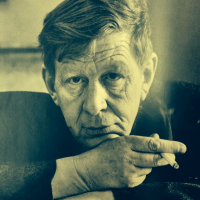 |
Wystan Hugh (W.H.) Auden, 190773. English-American poet. After an early career in England, tackling subjects from romance to religion, Auden moved to America in 1939. Always a lyric poet of considerable technical sophistication, his later career is noted for his opera libretti, including that for Stravinsky's Rake's Progress. |
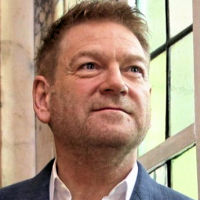 |
Kenneth Branagh, 1960 . British actor and director. Branagh was born in Belfast, but moved to England with his family at the age of 9 to escape the Troubles. He made a triumphant debut with the Royal Shakespere Company as Henry V, which he used as the basis for his own series of Shakespeare films, in which he both starred and directed, later branching out to include roles from Frankenstein to Hercule Poirot. He does not appear in his 2021 autobiographical film Belfast, however, since it features his experiences as a young boy. |
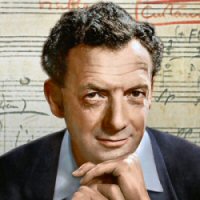 |
Benjamin Britten, 191376. English composer. Arguably the leading opera composer of the mid-20th century, Britten's major operas have included Peter Grimes (1945), Billy Budd (1951), Gloriana (1953), A Midsummer Night's Dream (1960), and Death in Venice (1973), plus many stage works for smaller forces. He was equally active as a composer of instrumental music and text settings, and latterly as a conductor and accompanist. |
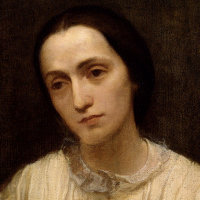 |
Julia Margaret Cameron, 181579. English photographer. Julia Margaret Pattle was born in British India, and remained there until her mid-forties as a society hostess until her husband retired to England in 1845. In 1863, when she was 48, she received a box camera as a Christmas present from her daughter, as "something to amuse her." Indeed it did, and she became famous for her portraits of famous sitters, such as her neighbor Tennyson, and inventive restagings of literary works. |
 |
John Collier, 18501934. English painter. Collier was a highly successful portraitist and painter of scenes from life, often with a "puzzle picture" element. He was connected through both his marriages to the family of Thomas Huxley, President of the Royal Society. |
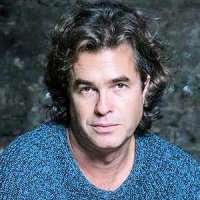 |
Rupert Goold, 1972 . English director. Goold is Artistic Director of the Almeida Theatre in London and an Associate Director of the Royal Shakespeare Company. His 2010 film of Macbeth stars Sir Patrick Stuart, whom he first directed in a stage production. |
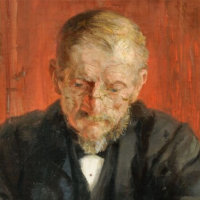 |
Friedrich Heyser, 18571921. German painter. Heyser specialized in portraits, but also tackled literary and mythological subjects. Except for a short period studying in Paris, he was trained and worked entirely in Germany. [The image is by Heyser; there are no portraits of him.] |
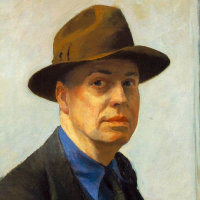 |
Edward Hopper, 18821967. American painter. In all his career, Hopper maintained a balance between the social realism of his teacher Robert Henri, and the simplified forms of the abstraction that came into play soon after. Painting almost exclusively scenes from contemporary life, he managed to universalize the specific, and give everyday situations a powerful aura that transcended their literal subject. |
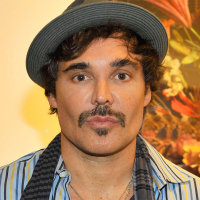 |
David LaChapelle, 1963 . American photographer. Equally at home in commercial, fine art, and pop culture contexts, LaChapelle has used surrealism, humor, and iconic references to explore often controversial subjects such as politics and religion. He has also directed numerous music videos with leading pop artists. |
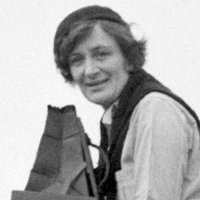 |
Dorothea Lange, 18951965. American documentary photographer. During the Great Depression, Lange abandoned her work as a society portraitist in San Francisco to work for the Farm Security Administration documenting the plight of migrants fleeing the Dust Bowla theme similar to John Steinbeck's The Grapes of Wrath. Her most famous picture Migrant Mother (1936) put an individual human face (Florence Owens Thompson) on mass suffering. |
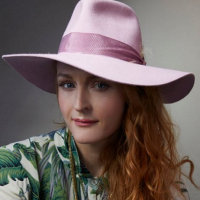 |
Claire McCarthy, 1975 . Australian director. McCarthy's film credits since 2007 include work as screenwriter, producer, director, and even choreographer. She is also a visual artist. [The birthdate given here is conjectual.] |
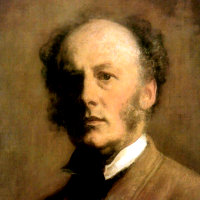 |
John Everett Millais, 182996. English painter. Millais was, with DG Rossetti and William Holman Hunt, one of the founders of the Pre-Raphaelite Brotherhood in 1848. At first noted for his highly realistic treatment of religious and literary subjects, he later adopted a more sentimental style, with which he was hugely successful. |
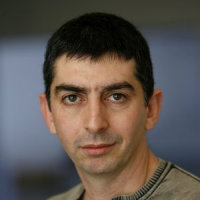 |
Adi Nes, 1966 . Israeli photographer. Israeli photographer. By means of carefully posed photographs, often of soldiers, and sometimes referring to iconic models such as the Last Supper, Nes reexamines assumptions about manhood, Israeli identity, and the Jewish faith. |
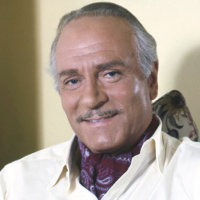 |
Sir Laurence Olivier, 190789. English actor and director. Olivier was arguably the leading actor in Britain in the mid-20th century, and her preeminent Shakespearian. After some years as Director of the Old Vic in London, he was appointed Director of the new National Theatre in 1963, launching its national success. He was also a veteran of films, including a Shakespeare trilogy he produced shortly after WW2, and is the winner of four Oscars. |
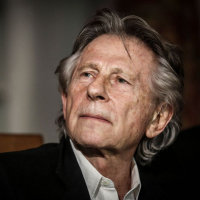 |
Roman Polanski, 1933 . French Polish film director. Born in Paris to Polish parents who then moved the family back to Krakow, Polanski escaped the Holocaust by taking on a false identity. He made a series of award-winning films, first in Poland (Knife in the Water, 1962), then in Britain (Repulsion, 1965), and then in the US (Rosemary's Baby, 1968, Chinatown, 1974). Fleeing the US in 1978 to escape a sex charge, he continued to direct films in Europe, |
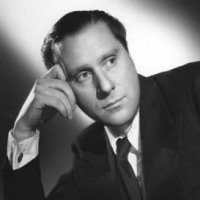 |
Carol Reed, 190676. English film director. The son of celebrated actor-manager Sir Herbert Beerbohm Tree, Reed made his directorial debut in 1935, but is best known for the film noir features he made after the War, such as Odd Man Out (1947) and especially The Third Man (1949), to a script by Graham Greene and starring Orson Welles. |
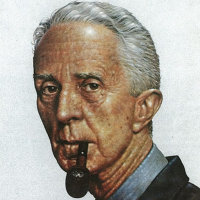 |
Norman Rockwell, 18941978. American painter and illustrator. Rockwell began working as a professional illustrator at 18, and continued to become one of America's best-loved artists. His success had partly to do with the circulation of the periodicals (notably The Saturday Evening Post) that had him on their covers, and partly for his depiction of a family-friendly folksy America, but he was also an accomplished artist who could tackle serious subjects like racial and social injustice. |
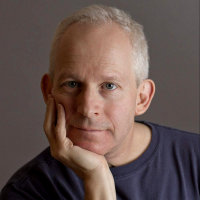 |
Richard Tuschman, 1965 . American photographer. Tuschman began experimenting with digital imaging in the early 1990s, developing a style that synthesized his interests in photography, painting and assemblage. He works in NYC, but has exhibited and won prizes internationally. [The birthdate given here is conjectual.] |
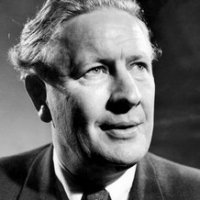 |
Harry Watt, 190687. Scottish film director. Watt began his career in the 1930s making government-sponsored documentary films such as Night Train (1936), then went on to make inspirational films during WW2. He later switched to feature films, though with less success. |
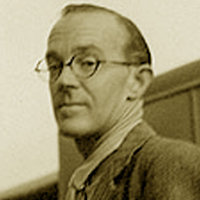 |
Basil Wright, 190787. English film director. Wright began his career making documentary films with the GPO Film Unit, co-directing Night Mail (1936) with Harry Watt. He later formed his own company, The Realist Film Unit. Among other successes, he commissioned Britten's Young Person's Guide to the Orchestra for a film in 1946. |
ART: For the paintings discussed (or intended to be discussed) in class see below. Scroll to the end or click these links to reach the sections on FILM and BIOS.
COMPARISON 1



Some questions: What do you think inspired the photographer, Richard Tuschman, to pay homage to this painting? What has he altered? Does his version add anything to make the exercise worthwhile? Conversely, does the photograph change your appreciation of the painting? Would the photograph alone work for somebody who had never seen a Hopper painting? Can you suggest a title for either image?
Some facts: Richard Tuschman creates his homages by building model sets, photographing the figures separately, and combining them in PhotoShop. The Hopper painting, Hotel by a Railroad (1952), is one of many he painted showing the isolation of modern life. One might ask if the railroad is significant, perhaps contributing to a fall in property values, giving the room a slightly seedy quality.
COMPARISON 2
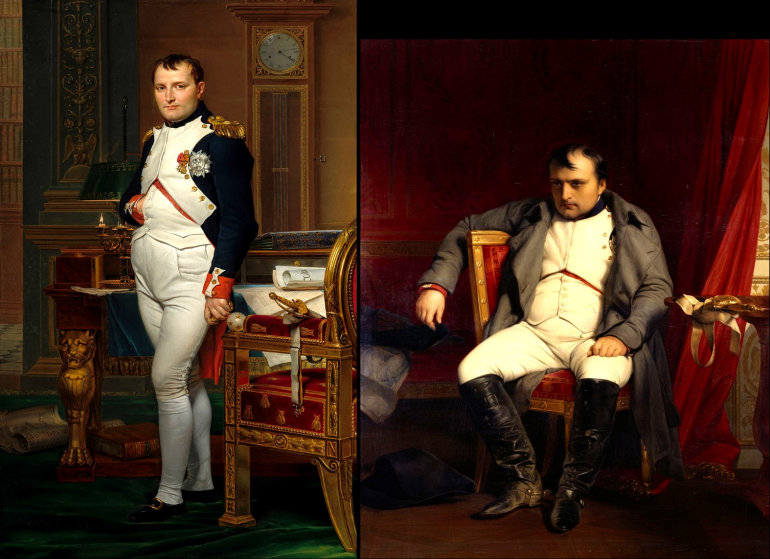


Some questions: What does Tuschman pick up on in the Hopper painting? What is the effect of the changes he has made? Moving to the comparison between his two photographs, which is the more lifelike? What is the setting of each? What can we learn from the detail?
Some facts: Richard Tuschman made his Hopper Meditations in 2012 and 2013. After staying close to Hopper originals for the first half-dozen, he began increasingly to branch out on his own. Most, however, do not have titles, and while all suggest some kind of story, the narratives are deliberately ambiguous and open-ended.
COMPARISON 3




Some questions: Which version has the most detail? Which is the most "true to life"? What is the effect of so much detail in the Millais? By using less, does Heyser gain or lose anything? What challenges does the film director face in realizing such a well-known image on film?
Some facts: Millais' model was Elizabeth Siddal, who later married the painter DG Rossetti. He kept her lying for hours in a bath of water, supposedly heated, but more than once he let the lamps go out; Jane's father sued him when his daughter caught pneumonia. Painting literary subjects was something of a Pre-Raphaelite specialty; Heyser, by contrast, has no one easily identifiable style. In Claire McCarthy's version of the Ophelia story, based on a novel by Lisa Klein, the heroine does not drown, but gets far away from the poisons of the court to raise her daughter by Hamlet.
COMPARISON 4



Some questions: [I have included Cameron's portrait of Tennyson to show that her equipment was capable of sharp detail; the soft-focus style of the other was a choice.] Why did she make it? What does the greater detail in the Collier achieve? How has each artist created a sense of the distant period?
Some facts: Cameron and Tennyson were neighbors on the Isle of Wight; she illustrated an 1874 edition of the Idylls at his request. The next slide shows one of her illustrations to another Tennyson poem, Maud, compared with an anonymous postcard of around the same date. Compare the approach of each photographer to achieve a "poetic" effect.

Cameron: Maud (1875), with contemporary postcard
COMPARISON 5



Some questions: Given that both pictures have obviously been set up by the photographer, which is the more likely to occur in real life? Do any of the figures seem incongruous in either picture? How would you describe each artist's use of color? And lighting? Is the setting of each (Israel and California) significant? What real-life ideas do you think each artist wanted to explore?
Some facts: David LaChapelle identifies himself as a devout Catholic; this picture, one of a series called Jesus is my Homeboy, is not intended satirically. Adi Nes displayed his picture simply as Untitled. He wrote about it: "The moment you serve as a soldier, you choose to give yourself over to the society, to the army, to someone else. You have to take the possibility you're going to die. Here, I tried to incorporate the idea that this supper may be the last for any of them, not just Jesus. All of them are Jesus, all of them are Judas."
COMPARISON 6




Some questions: Which painting of the three is the most real? Which has the most story? Which is the most comic? Which is the most serious? And which most transcends illustration to become a work of art?
Some facts: I am struck by the differences between #1 and #2: the first is all actionthough with two figures significantly stilland basically comic in tone, while the second is motionless and serious. The first one tells a scrap of story right there in the picture; in the second, the story is in the experiences of the returning Marine, some of which he may never tell at all. [Note the single verbal clue in the paper on the wall: Garageman a Hero.] The third is a commissioned piece to commemorate the legacy of Abraham Lincoln; it is allegorical rather than real, though composed of realistic elements. This one, I think, strives for greatness as something more than illustration, but for me the prize goes to #2.
COMPARISON 7



Some questions: If you were to show the Lange photo to someone who had no knowledge of its historical context, would it still have the same power? What do you think gives it that power? What is the role of the photographer in creating it, beyond merely clicking the shutter? What emotions does the Nes picture arouse in you? Do they depend at all on its similarity to the Lange? What is the effect of the greater depth and detail in his setting? Would it work so well in black and white? Finally, can you guess the title of the Nes picture?
Some facts: Dorothea Lange later wrote about taking the picture: "I saw and approached the hungry and desperate mother, as if drawn by a magnet. I do not remember how I explained my presence or my camera to her, but I do remember she asked me no questions. I made five exposures, working closer and closer from the same direction. I did not ask her name or her history. She told me her age, that she was thirty-two. She said that they had been living on frozen vegetables from the surrounding fields, and birds that the children killed. She had just sold the tires from her car to buy food. There she sat in that lean-to tent with her children huddled around her, and seemed to know that my pictures might help her, and so she helped me. There was a sort of equality about it." Her publisher sent the picture to the authorities in Washington, who rushed aid to the camp to prevent starvation. Adi Nes titled his picture Hagar, the mother of Abraham's first child, Ishmael, who was cast out when Sarah miraculously became pregnant with Isaac. It surely makes a statement for an Israeli to portray the supposed matriarch of the Arab people in this way.
FILM: All the clips played in class are available on YouTube in some form, whether longer
or shorter or differently scored. The two Macbeth clips come from a compilation of five different versions of
the scene, all of which are interesting.
Night Mail (Watt & Wright, 1936), opening (but with rock music!)
Night Mail (Watt & Wright, 1936), Auden poem sequence
text of the Auden poem
Odd Man Out (Reed, 1946), opening
Belfast (Branagh, 2021), opening
Hamlet (Olivier, 1948), drowning of Ophelia
Ophelia (McCarthy, 2018), drowning of Ophelia
Macbeth (Polanski, 1971), opening sequence
Macbeth (Goold,2010), opening sequence
The script for this part of the class can be found here.
PEOPLE: Here are brief bios of the painters, photographers, and filmmakers (plus one
poet) whom we considered in the class.
 |
Wystan Hugh (W.H.) Auden, 190773. English-American poet. After an early career in England, tackling subjects from romance to religion, Auden moved to America in 1939. Always a lyric poet of considerable technical sophistication, his later career is noted for his opera libretti, including that for Stravinsky's Rake's Progress. |
 |
Kenneth Branagh, 1960 . British actor and director. Branagh was born in Belfast, but moved to England with his family at the age of 9 to escape the Troubles. He made a triumphant debut with the Royal Shakespere Company as Henry V, which he used as the basis for his own series of Shakespeare films, in which he both starred and directed, later branching out to include roles from Frankenstein to Hercule Poirot. He does not appear in his 2021 autobiographical film Belfast, however, since it features his experiences as a young boy. |
 |
Benjamin Britten, 191376. English composer. Arguably the leading opera composer of the mid-20th century, Britten's major operas have included Peter Grimes (1945), Billy Budd (1951), Gloriana (1953), A Midsummer Night's Dream (1960), and Death in Venice (1973), plus many stage works for smaller forces. He was equally active as a composer of instrumental music and text settings, and latterly as a conductor and accompanist. |
 |
Julia Margaret Cameron, 181579. English photographer. Julia Margaret Pattle was born in British India, and remained there until her mid-forties as a society hostess until her husband retired to England in 1845. In 1863, when she was 48, she received a box camera as a Christmas present from her daughter, as "something to amuse her." Indeed it did, and she became famous for her portraits of famous sitters, such as her neighbor Tennyson, and inventive restagings of literary works. |
 |
John Collier, 18501934. English painter. Collier was a highly successful portraitist and painter of scenes from life, often with a "puzzle picture" element. He was connected through both his marriages to the family of Thomas Huxley, President of the Royal Society. |
 |
Rupert Goold, 1972 . English director. Goold is Artistic Director of the Almeida Theatre in London and an Associate Director of the Royal Shakespeare Company. His 2010 film of Macbeth stars Sir Patrick Stuart, whom he first directed in a stage production. |
 |
Friedrich Heyser, 18571921. German painter. Heyser specialized in portraits, but also tackled literary and mythological subjects. Except for a short period studying in Paris, he was trained and worked entirely in Germany. [The image is by Heyser; there are no portraits of him.] |
 |
Edward Hopper, 18821967. American painter. In all his career, Hopper maintained a balance between the social realism of his teacher Robert Henri, and the simplified forms of the abstraction that came into play soon after. Painting almost exclusively scenes from contemporary life, he managed to universalize the specific, and give everyday situations a powerful aura that transcended their literal subject. |
 |
David LaChapelle, 1963 . American photographer. Equally at home in commercial, fine art, and pop culture contexts, LaChapelle has used surrealism, humor, and iconic references to explore often controversial subjects such as politics and religion. He has also directed numerous music videos with leading pop artists. |
 |
Dorothea Lange, 18951965. American documentary photographer. During the Great Depression, Lange abandoned her work as a society portraitist in San Francisco to work for the Farm Security Administration documenting the plight of migrants fleeing the Dust Bowla theme similar to John Steinbeck's The Grapes of Wrath. Her most famous picture Migrant Mother (1936) put an individual human face (Florence Owens Thompson) on mass suffering. |
 |
Claire McCarthy, 1975 . Australian director. McCarthy's film credits since 2007 include work as screenwriter, producer, director, and even choreographer. She is also a visual artist. [The birthdate given here is conjectual.] |
 |
John Everett Millais, 182996. English painter. Millais was, with DG Rossetti and William Holman Hunt, one of the founders of the Pre-Raphaelite Brotherhood in 1848. At first noted for his highly realistic treatment of religious and literary subjects, he later adopted a more sentimental style, with which he was hugely successful. |
 |
Adi Nes, 1966 . Israeli photographer. Israeli photographer. By means of carefully posed photographs, often of soldiers, and sometimes referring to iconic models such as the Last Supper, Nes reexamines assumptions about manhood, Israeli identity, and the Jewish faith. |
 |
Sir Laurence Olivier, 190789. English actor and director. Olivier was arguably the leading actor in Britain in the mid-20th century, and her preeminent Shakespearian. After some years as Director of the Old Vic in London, he was appointed Director of the new National Theatre in 1963, launching its national success. He was also a veteran of films, including a Shakespeare trilogy he produced shortly after WW2, and is the winner of four Oscars. |
 |
Roman Polanski, 1933 . French Polish film director. Born in Paris to Polish parents who then moved the family back to Krakow, Polanski escaped the Holocaust by taking on a false identity. He made a series of award-winning films, first in Poland (Knife in the Water, 1962), then in Britain (Repulsion, 1965), and then in the US (Rosemary's Baby, 1968, Chinatown, 1974). Fleeing the US in 1978 to escape a sex charge, he continued to direct films in Europe, |
 |
Carol Reed, 190676. English film director. The son of celebrated actor-manager Sir Herbert Beerbohm Tree, Reed made his directorial debut in 1935, but is best known for the film noir features he made after the War, such as Odd Man Out (1947) and especially The Third Man (1949), to a script by Graham Greene and starring Orson Welles. |
 |
Norman Rockwell, 18941978. American painter and illustrator. Rockwell began working as a professional illustrator at 18, and continued to become one of America's best-loved artists. His success had partly to do with the circulation of the periodicals (notably The Saturday Evening Post) that had him on their covers, and partly for his depiction of a family-friendly folksy America, but he was also an accomplished artist who could tackle serious subjects like racial and social injustice. |
 |
Richard Tuschman, 1965 . American photographer. Tuschman began experimenting with digital imaging in the early 1990s, developing a style that synthesized his interests in photography, painting and assemblage. He works in NYC, but has exhibited and won prizes internationally. [The birthdate given here is conjectual.] |
 |
Harry Watt, 190687. Scottish film director. Watt began his career in the 1930s making government-sponsored documentary films such as Night Train (1936), then went on to make inspirational films during WW2. He later switched to feature films, though with less success. |
 |
Basil Wright, 190787. English film director. Wright began his career making documentary films with the GPO Film Unit, co-directing Night Mail (1936) with Harry Watt. He later formed his own company, The Realist Film Unit. Among other successes, he commissioned Britten's Young Person's Guide to the Orchestra for a film in 1946. |
